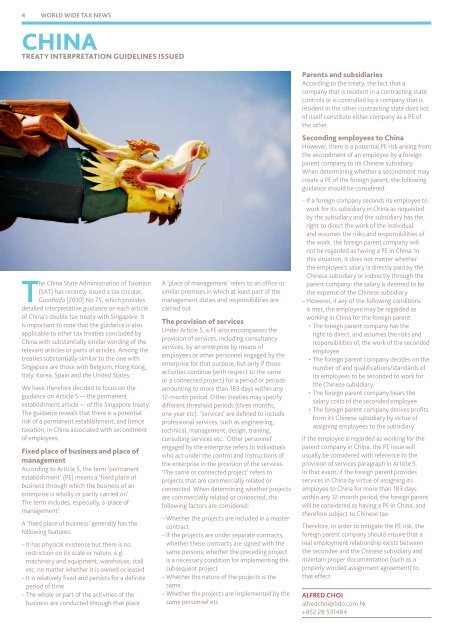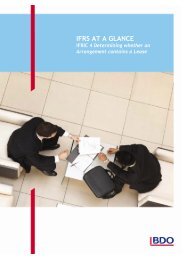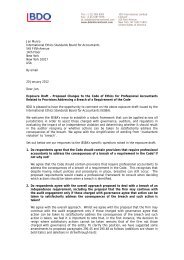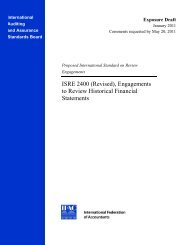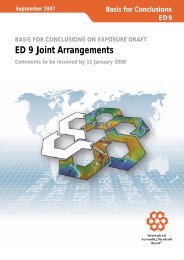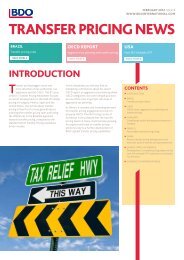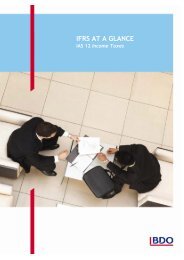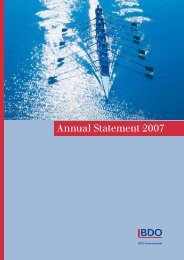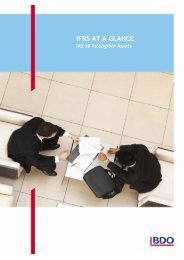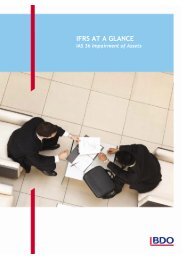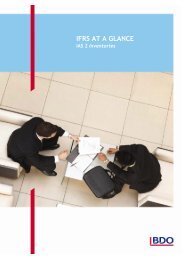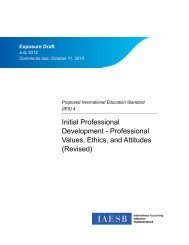Issue 24.pdf
Issue 24.pdf
Issue 24.pdf
You also want an ePaper? Increase the reach of your titles
YUMPU automatically turns print PDFs into web optimized ePapers that Google loves.
4 WORLD WIDE TAX NEWSchinaTreaty interpretation guidelines issuedThe China State Administration of Taxation(SAT) has recently issued a tax circular,Guoshuifa [2010] No 75, which providesdetailed interpretative guidance on each articleof China’s double tax treaty with Singapore. Itis important to note that the guidance is alsoapplicable to other tax treaties concluded byChina with substantially similar wording of therelevant articles or parts of articles. Among thetreaties substantially similar to the one withSingapore are those with Belgium, Hong Kong,Italy, Korea, Spain and the United States.We have therefore decided to focus on theguidance on Article 5 — the permanentestablishment article — of the Singapore treaty.The guidance reveals that there is a potentialrisk of a permanent establishment, and hencetaxation, in China associated with secondmentof employees.Fixed place of business and place ofmanagementAccording to Article 5, the term ‘permanentestablishment’ (PE) means a ‘fixed place ofbusiness through which the business of anenterprise is wholly or partly carried on’.The term includes, especially, a ‘place ofmanagement’.A ‘fixed place of business’ generally has thefollowing features:––It has physical existence but there is norestriction on its scale or nature, e.g.machinery and equipment, warehouse, stalletc, no matter whether it is owned or leased––It is relatively fixed and persists for a definiteperiod of time––The whole or part of the activities of thebusiness are conducted through that placeA ‘place of management’ refers to an office orsimilar premises in which at least part of themanagement duties and responsibilities arecarried out.The provision of servicesUnder Article 5, a PE also encompasses theprovision of services, including consultancyservices, by an enterprise by means ofemployees or other personnel engaged by theenterprise for that purpose, but only if thoseactivities continue (with respect to the sameor a connected project) for a period or periodsamounting to more than 183 days within any12-month period. Other treaties may specifydifferent threshold periods (three months,one year etc). ‘Services’ are defined to includeprofessional services, such as engineering,technical, management, design, training,consulting services etc. ‘Other personnel’engaged by the enterprise refers to individualswho act under the control and instructions ofthe enterprise in the provision of the services.‘The same or connected project’ refers toprojects that are commercially related orconnected. When determining whether projectsare commercially related or connected, thefollowing factors are considered:––Whether the projects are included in a mastercontract––If the projects are under separate contracts,whether these contracts are signed with thesame persons; whether the preceding projectis a necessary condition for implementing thesubsequent project––Whether the nature of the projects is thesame––Whether the projects are implemented by thesame personnel etcParents and subsidiariesAccording to the treaty, the fact that acompany that is resident in a contracting statecontrols or is controlled by a company that isresident in the other contracting state does notof itself constitute either company as a PE ofthe other.Seconding employees to ChinaHowever, there is a potential PE risk arising fromthe secondment of an employee by a foreignparent company to its Chinese subsidiary.When determining whether a secondment maycreate a PE of the foreign parent, the followingguidance should be considered:––If a foreign company seconds its employee towork for its subsidiary in China as requestedby the subsidiary and the subsidiary has theright to direct the work of the individualand assumes the risks and responsibilities ofthe work, the foreign parent company willnot be regarded as having a PE in China. Inthis situation, it does not matter whetherthe employee’s salary is directly paid by theChinese subsidiary or indirectly through theparent company: the salary is deemed to bethe expense of the Chinese subsidiary––However, if any of the following conditionsis met, the employee may be regarded asworking in China for the foreign parent:• The foreign parent company has theright to direct, and assumes the risks andresponsibilities of, the work of the secondedemployee• The foreign parent company decides on thenumber of and qualifications/standards ofits employees to be seconded to work forthe Chinese subsidiary• The foreign parent company bears thesalary costs of the seconded employee• The foreign parent company derives profitsfrom its Chinese subsidiary by virtue ofassigning employees to the subsidiaryIf the employee is regarded as working for theparent company in China, the PE issue willusually be considered with reference to theprovision of services paragraph in Article 5.In that event, if the foreign parent providesservices in China by virtue of assigning itsemployee to China for more than 183 dayswithin any 12-month period, the foreign parentwill be considered as having a PE in China, andtherefore subject to Chinese tax.Therefore, in order to mitigate the PE risk, theforeign parent company should ensure that areal employment relationship exists betweenthe secondee and the Chinese subsidiary andmaintain proper documentation (such as aproperly worded assignment agreement) tothat effect.ALFRED CHOIalfredchoi@bdo.com.hk+852 28 531484


